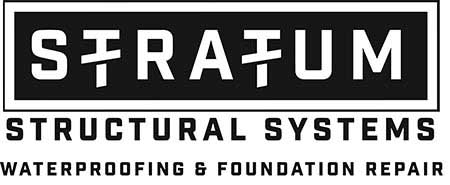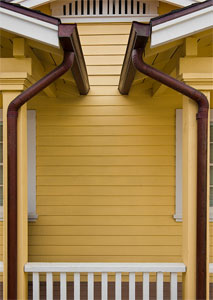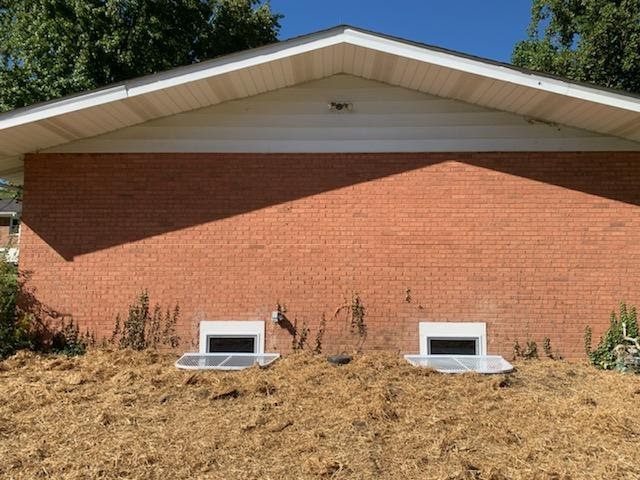How to Avoid Bowing Basement Walls

Bowing basement walls are a big concern for homeowners in St. Louis due to the area’s distinctive soil composition and frequent weather changes. These factors can exacerbate the development of bowing walls. These walls curve, or bow inward due to external pressures, posing significant risks to the structural integrity of a home. If left unaddressed, bowing walls can lead to severe damage, including cracks, leaks, and even potential collapse. By implementing effective strategies, homeowners can avoid the stress and expense associated with repairing bowing walls in St. Louis, ensuring their homes remain safe and sound.
Preventive Measures to Avoid Bowing Walls
Taking preventive measures is crucial for maintaining the integrity of your basement walls…and avoiding the costly consequences of bowing! You must promptly address any underlying factors associated with bowing walls, such as soil pressure and poor drainage. Being proactive will protect your property and save you money in the long run. Here are some practical tips for preventing bowing walls in your St. Louis property.
Soil Stabilization Techniques
The distinct soil composition and fluctuating weather conditions in St. Louis present significant challenges for maintaining stable foundations. The region’s soil often contains expansive clays that swell when wet and shrink when dry.
These changes in composition create excessive soil pressure that can lead to bowing basement walls. Additionally, the frequent shifts between wet and dry weather exacerbate these soil movements, further stressing the foundation.
Landscaping techniques can play a crucial role in reducing soil pressure around a home. Planting appropriate vegetation, such as deep-rooted grasses and shrubs, can help stabilize the soil.
These plants absorb excess moisture and anchor the soil in place. This natural approach not only enhances the aesthetic appeal of a property but also contributes to the long-term stability of the foundation. However, achieving optimal results often requires professional assistance.
Experts in soil stabilization can conduct thorough soil analyses to determine the best strategies and materials for each specific site. They can implement advanced techniques, such as mechanical or chemical stabilization, to ensure the soil remains stable and supportive.
Proper Grading and Drainage
Proper grading and drainage are fundamental components in the battle against bowing basement walls. They act as the first line of defense against the relentless forces of nature.
Ensure that the soil slopes away from your foundation. This is crucial because the slope directs water away from your home, reducing the risk of water accumulation around the foundation.
When water pools near your foundation, it can lead to increased hydrostatic pressure. Hydrostatic pressure is often an invisible but powerful force that pushes against your basement walls. Over time, this pressure can cause walls to bow inward, leading to structural issues that can be both challenging and expensive to repair.
By thoughtfully grading the landscape around your home, you can effectively manage rainwater and melting snow, minimizing the chances of water-related damage.
In addition to grading, maintaining an effective drainage system is vital for managing hydrostatic pressure and protecting your basement walls. This includes ensuring that gutters and downspouts are clear and functioning properly and directing water at least several feet away from your foundation.
Installing systems like French drains or sump pumps can further enhance your home’s ability to handle excess water. These drainage systems provide an additional layer of protection against the pressures that threaten your basement walls.
Tree Removal
In St. Louis, the presence of large trees very close to homes can pose a significant challenge to the stability of basement walls. The extensive root systems of these trees often seek out moisture in the soil, which can lead to increased pressure against the foundation. With time, this pressure can contribute to bowing, especially in older homes where the foundation may already be compromised.
While trees add beauty and shade to a property, their roots can be a hidden threat to the structural integrity of your home. Removing these trees might be a necessary step to alleviate the pressure on your basement walls and prevent further damage.
However, the decision to remove trees should not be taken lightly, as it can have environmental and aesthetic impacts. Consulting with a professional arborist or foundation specialist is crucial to assess the situation accurately.
These experts can determine whether tree removal is the best course of action or if alternative solutions, such as root barriers or targeted pruning, might suffice. By working with professionals, homeowners can ensure that any measures taken are effective and environmentally responsible, preserving both the health of their property and the surrounding landscape.
Inspect Your Property Regularly
Regular property inspections are vital for homeowners, especially in areas prone to foundation issues like St. Louis. By routinely examining your home, you can identify early signs of bowing walls and take corrective action before the damage becomes severe and costly.
One of the most telling visual indicators of potential wall bowing is the presence of cracks. Horizontal and diagonal cracks and often suggest significant pressure against the wall, which can lead to bowing if not addressed.
Vertical cracks near basement windows are sometimes less severe. However, they can also indicate movement and stress within the foundation.
Keep a vigilant eye on these signs to catch problems early. Seek professional advice to prevent further deterioration.
In addition to visual cues, functional symptoms within the home can also signal underlying foundation issues. For instance, sticking doors and windows may indicate that the structure is shifting due to bowing walls. These symptoms occur when the frame of the house becomes misaligned, often as a result of foundation movement.
Regular inspections should include checking for these functional issues, as well as looking for moisture accumulation. Incorporating these routine checks into your home maintenance schedule protects your property against structural damage.
Hire a Professional in St. Louis for Bowing Walls
Hiring a professional to fix bowing walls in St. Louis is crucial due to the complex nature of the problem and the specific challenges posed by the region’s soil and weather conditions. Bowing walls are often a sign of serious structural issues, such as excessive soil pressure or hydrostatic pressure, which can lead to further damage if not addressed promptly.
Professionals have the expertise to accurately assess the severity of the bowing and determine the most effective repair strategy. For instance, if the bowing is minimal, less invasive solutions like carbon fiber straps might be sufficient. However, more severe cases may require robust interventions such as tieback wall anchors or steel I-beams to stabilize and straighten the walls effectively. Another solution is to eliminate the source of the problem entirely by excavating the affected wall and installing a full wall pressure relief system. Although this is much more invasive, it does address the root cause of the bowing wall.
Professional foundation repair companies in St. Louis, like Stratum Structural Systems, offer a range of solutions tailored to the specific needs of each home. Rooted in the exceptional standards set by our founders, we are steadfast in our dedication to maintaining the structural soundness of your home.
Our team of skilled and devoted professionals incorporate cutting-edge industry advancements and top-tier materials to deliver customized and enduring solutions for all foundation concerns. From minor cracks to significant structural issues, we are here to assist you every step of the way. Contact us today!




